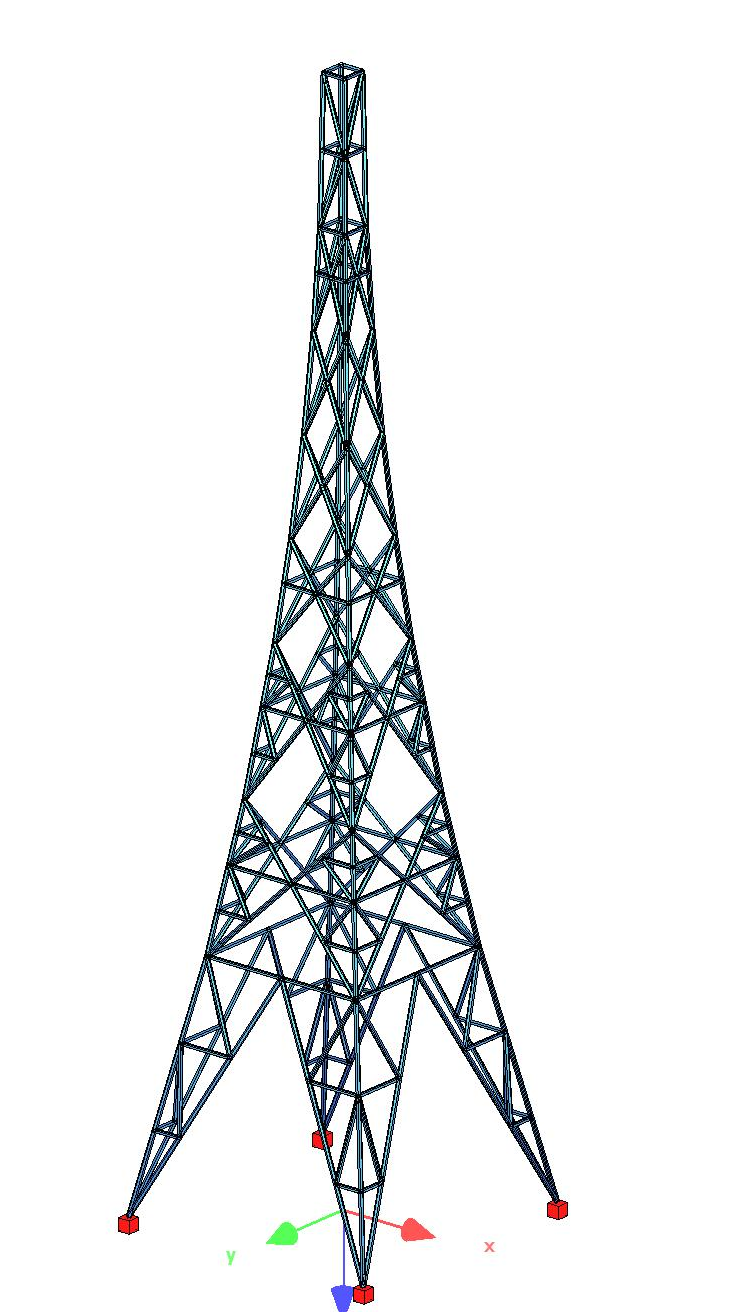Funding: Federal Ministry of Economics and Energy, IGF project (18662 N) of the Research Association for Steel Application (FOSTA)
Project Partners: CWD – Center for Wind Power Drives
Optimized dimensioning of high lattice towers for wind turbines under realistic consideration of aerodynamic effects, fatigue behaviour and steel grade influence
Description:
To reach great heights, many branches of industry, such as the mobile phone or wind energy industry, often use lattice mast constructions. These constructions have great advantages over classic tubular steel towers or hybrid solutions, both from an economic point of view and because of the unproblematic transport possibilities. Due to the high number of supporting elements, however, the degree of structural optimization is usually limited, especially since the geometric design usually has to be specified manually. In this paper the basic principles of an automatic structural optimization of the supporting structure geometry are presented and demonstrated with an example. Not only the semi-probabilistic safety concept but also a fully probabilistic approach is used. Both the geometric optimization and the fully probabilistic calculation are to be used later in the planning of new towers as well as for the safety assessment of existing towers.

Parametrically formulated modules of truss sections to enable automatic optimization
The aim of the project is the optimization of lattice towers for wind energy technology with regard to structure and topology. With the help of the optimization methods to be developed, the effects of the use of higher strength steel grades and different cross-sectional shapes are to be evaluated. The investigations thus also aim at making it possible to assess the economic significance of the choice of steel grade and cross-section in advance for the future planning of comparable plants.
In order to take into account the dynamic behaviour of the plants in the operating conditions, a spectral evaluation mechanism is set up and compared with the results of classical FMD calculations. The spectral calculation module becomes part of the optimization algorithm. The dynamic verifications of load capacity, fatigue strength and serviceability required for the design of slender tower structures are the goal of the optimization strategy. With the developed tools an economical comparison between different design forms of truss towers for WTGs can be made. In addition, the project results can be used to achieve a much deeper optimization of the supporting structure in consideration of the operating conditions.
The project results are made available to potential users from the field in the form of a calculation tool. The project documentation includes comparative calculations and application recommendations.

Example of an automatically generated structure of a truss tower
